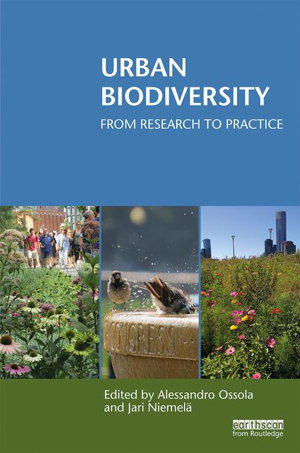| Mon | 9am – 5:30pm |
| Tue | 9am – 5:30pm |
| Wed | 9am – 5:30pm |
| Thu | 9am – 5:30pm |
| Fri | 9am – 7pm |
| Sat | 9am – 5pm |
| Sun | 10am – 5pm |
Ask our staff anything about our shop or products, or share your feedback.

PublishedRoutledge, December 2017 |
ISBN9781138224391 |
FormatPaperback, 260 pages |
Dimensions23.5cm × 15.9cm |
Urban biodiversity is an increasingly popular topic among researchers. Worldwide, thousands of research projects are unravelling how urbanisation impacts the biodiversity of cities and towns, as well as its benefits for people and the environment through ecosystem services.
Exciting scientific discoveries are made on a daily basis. However, researchers often lack time and opportunity to communicate these findings to the community and those in charge of managing, planning and designing for urban biodiversity. On the other hand, urban practitioners frequently ask researchers for more comprehensible information and actionable tools to guide their actions. This book is designed to fill this cultural and communicative gap by discussing a selection of topics related to urban biodiversity, as well as its benefits for people and the urban environment. It provides an interdisciplinary overview of scientifically grounded knowledge vital for current and future practitioners in charge of urban biodiversity management, its conservation and integration into urban planning. Topics covered include pests and invasive species, rewilding habitats, the contribution of a diverse urban agriculture to food production, implications for human well-being, and how to engage the public with urban conservation strategies. For the first time, world-leading researchers from five continents convene to offer a global interdisciplinary perspective on urban biodiversity narrated with a simple but rigorous language. This book synthesizes research at a level suitable for both students and professionals working in nature conservation and urban planning and management.

